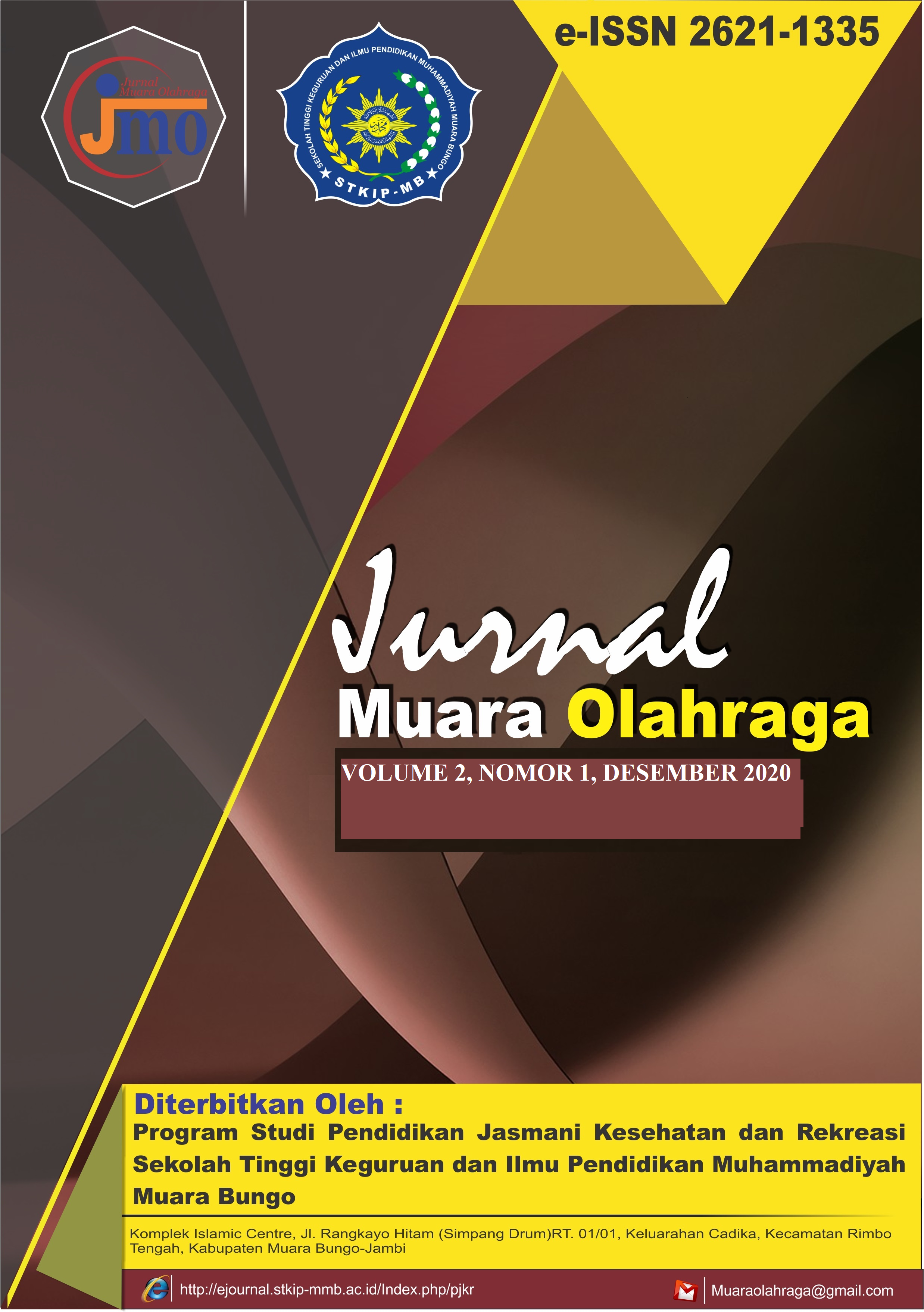PENGARUH METODE LATIHAN DINDING DAN METODE LATIHAN BERPASANGAN TERHADAP KETEPATAN PASSING
Abstract
This research is due to the lack of accuracy in passing under the volleyball game of SMP Negeri 1 Limbur Lubuk Mengkuang.The purpose of this study was to determine the effect of dinsing and pairing exercises on the accuracy of under-passing in the volleyball game SMP Negeri 1 Limbur Lubuk Mengkuang. This type of research is a quasi-experiment to see the effect of the training method of wall and pair training on the accuracy of lower passing in volleyball.
The population in this study were all students of SMP Negeri 1 Limbur Lubuk Mengkuang, totaling 161 people. Sampling using a purposive sampling technique with a total sample of 26 people. The sample was divided into two groups through ordinal pairing technique, each group consisting of 13 people. Before the test is continued, pre-test and post-test will be conducted.
Research results are (1) the wall training method gives a significant effect on the accuracy of under passing in volleyball games. It can be found with, thitung = 9.11> ttabel = 1.78 (2) the paired training method gives a significant effect on the accuracy of under passing in volleyball this can be known by, thitung = 8.94> ttabel = 1.78. (3) there is a significant difference in effect between the wall method group training with the pair method trainingto the accuracy of under passing in this volleyball game it can be found with thitung = 3.04> ttabel = 1.78. so the wall and pairing method can provide the accuracy of under passing in a volleyball game SMPNegeri 1 Limbur Lubuk Mengkuang.
| Keywords | : |
Keywords:
latihan dinding, latihan berpasangan, passing bawah, bola voli wall training, pair training and under passing accuracy, passing, vol, volleyball
|
| Galleys | : | |
| Published | : |
2020-02-09
|
| How to Cite | : |
FAUZI, F. (2020). PENGARUH METODE LATIHAN DINDING DAN METODE LATIHAN BERPASANGAN TERHADAP KETEPATAN PASSING. JURNAL MUARA OLAHRAGA, 2(1), 218–227. https://doi.org/10.52060/jmo.v2i1.242
|
| Issue | : |
Section
Articles
|








.png)

_SCCC.png)
